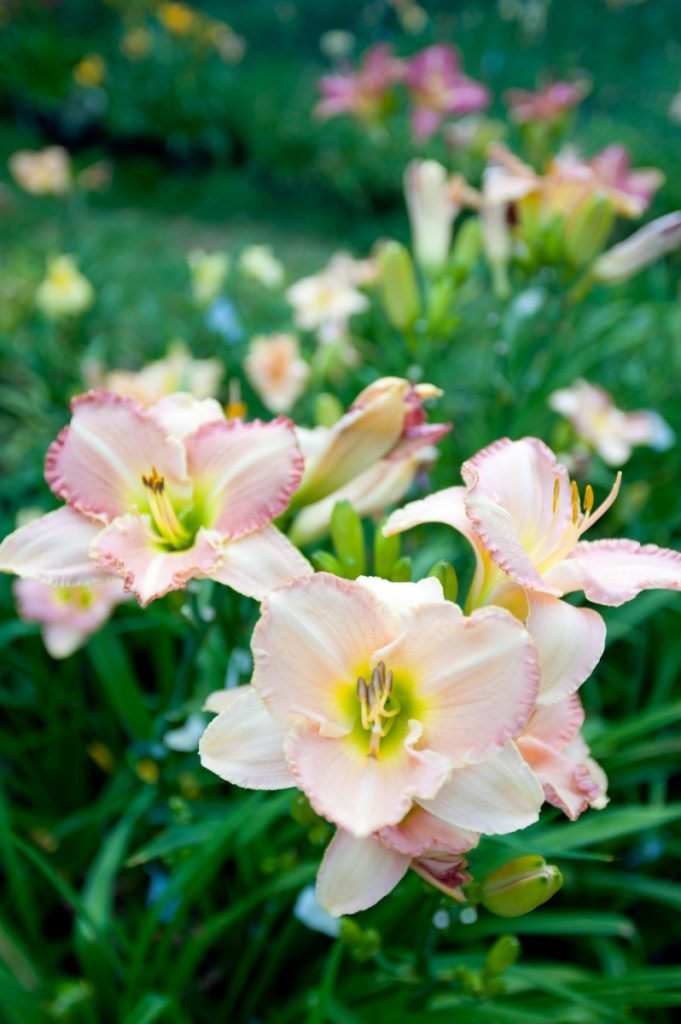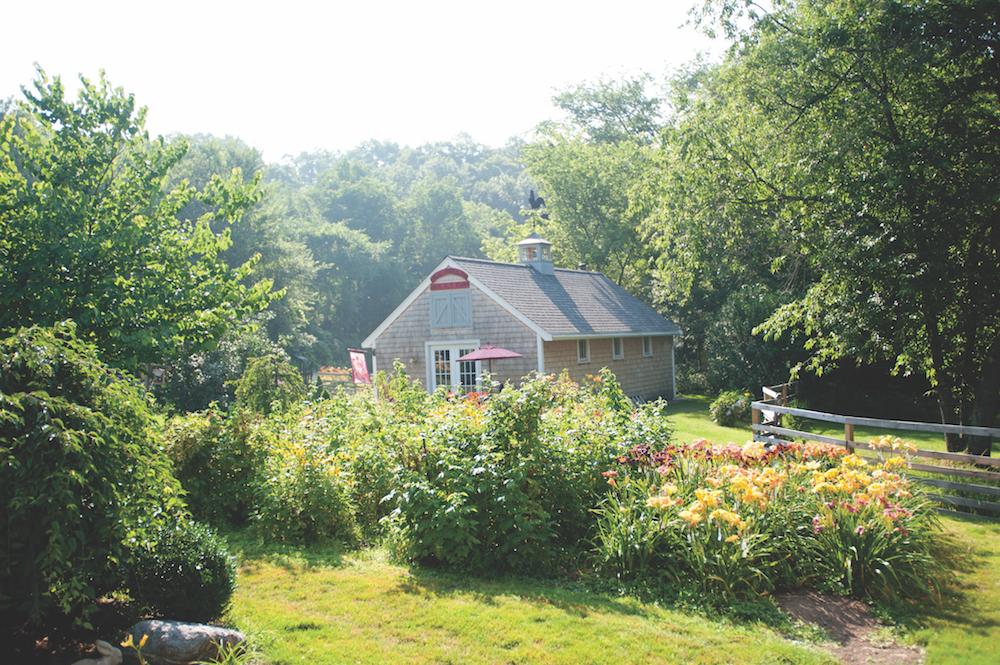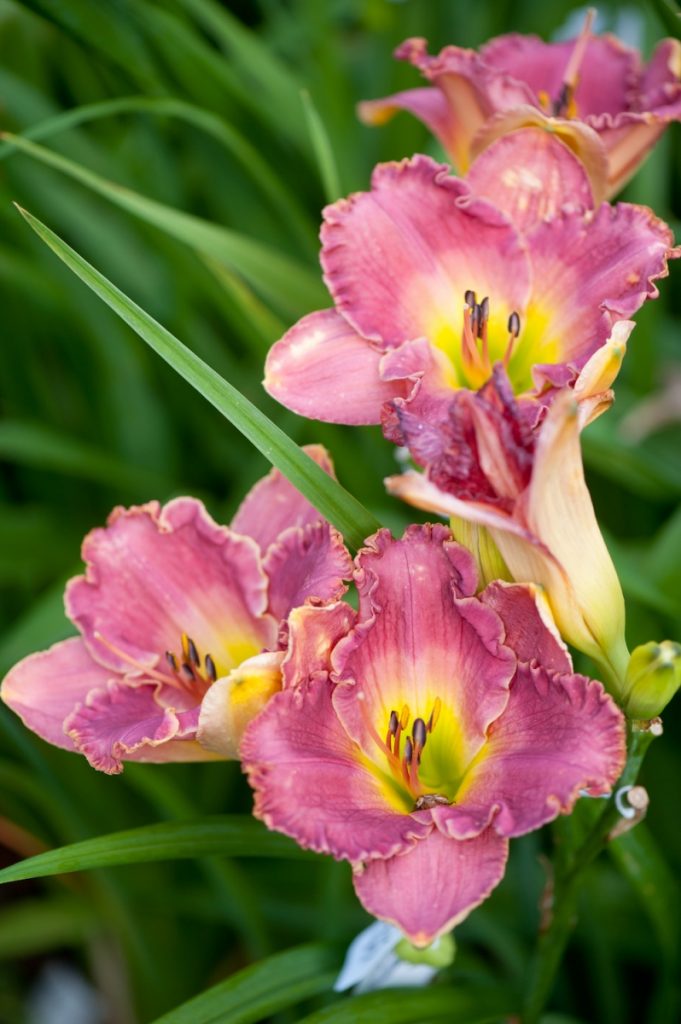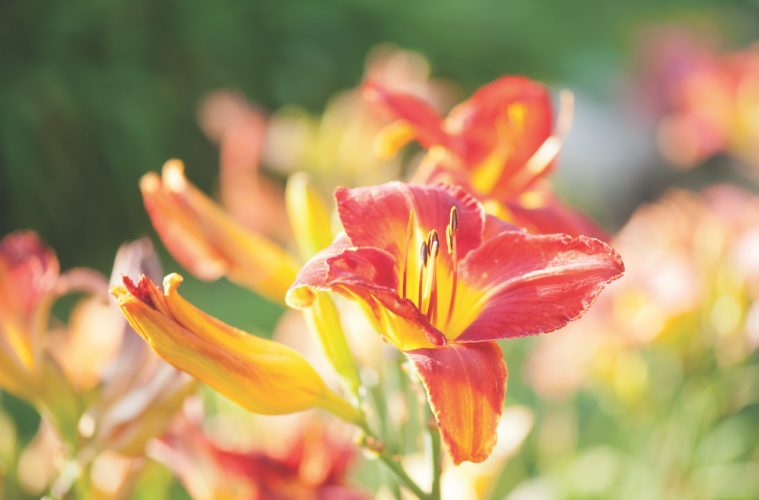Whether or not Susan Stowe would dig in when she moved to her 2-acre property in Topsfield in 1975 was never in question. After all, gardening was in her roots. “I grew up on a farm,” she explains, “and I’ve gardened my whole life.” So, when she took a teaching job in Beverly and bought a home with husband Ken in nearby Topsfield, she immediately sat down and mapped out space for gardens. Given a stretch of flat and semi-featureless land, her gardening bent could have taken any direction. Like most new homeowners, she tested the waters to get a handle on what would thrive in the neighborhood. But tellingly, that’s when daylilies became a major part of her life.
At first, Stowe wasn’t devoted solely to daylilies. Prone to dabbling, she initially created gardens featuring the full complement of various plant protagonists, including an ample vegetable garden harkening back to her farming roots. And, gardens had to vie with the baseball field that sprouted up to preoccupy the kids. But even back then, Stowe was trying her hand at hybridizing, creating new breeds of Siberian iris. The whole idea of fiddling with chromosomes has always fascinated this particular gardener.
Gradually, daylilies began to step into the foreground. Due to the veins of clay running through her soil, she struggled with certain perennials before amending the soil with compost. For example, the lifelong gardener had no luck whatsoever with the bearded iris that traditionally proves a mainstay for most of New England. However, poor soil is fine with daylilies, as long as it isn’t swampy.

“They are really versatile plants,” she says she discovered the hard way. “Not only are they hardy, but also given at least six hours of sun, daylilies are a great backbone for a perennial garden.” Gradually, daylilies began to muscle out other residents of the landscape, due in part to their fortitude, but also because of their inherent beauty. And what became Hill Hollow Daylilies took on a unique focus when Stowe married her ongoing fascination for crafting new plants to her affection for daylilies. Pretty soon, she was knee-deep in hybridizing daylilies.
The new direction probably surprised nobody. Everything about daylilies fascinates Stowe, but she in particular saw the promise in making an impact on the development of a flower that was rapidly becoming a personal favorite, and she saw the promise in improving its ranks. Along the way, she had joined the New England Daylily Society (a chapter of the American Hemerocallis Society), a group devoted to the genus Hemerocallis. Despite their common name, daylilies are not members of the lily family. Originally native to East Asia, Japan, and China, Hemerocallis fulva arrived in this country in the late 17th century, found the climate to its liking, multiplied readily, and naturalized along roadsides in a flash. The tawny rust-colored flowers that you find along country roads, multiplying via corms, bear witness to a plant that tolerates growing conditions that would be the death of many less stoic perennials. This plant is a survivor.
Hemerocallis fulva quickly endeared itself to everyone, so it didn’t take long before gardeners were expanding the color range and creating new versions. By the time Stowe started getting serious about daylilies about 12 years ago, the legions of registered cultivars available had already reached prodigious numbers, verging on 65,000. “Now there are probably over 100,000 registered daylilies out there,” Stowe guesstimates. Still, she sees plenty of room for improvement. Every breeder has his or her own holy grail, and Stowe has very definite goals when it comes to the direction she feels daylilies should be going.

Stowe is partial to bagels. If that sounds like a total non sequitur in the context of gardening, you don’t know your daylilies. Bagels are a special group of daylilies with a rounded flower form and petals thrown back (recurved is the technical term). They are the polar opposite of the thin-petaled spider daylilies, which do nothing to thrill Stowe. But in her capacity as a good breeder, Stowe takes a broader view and works on a vatiety of traits simultaneously. She values flowers that have heavy substance in their petals, which helps them to endure the nuances of weather. But no matter what the weather offers, daylily flowers last only a day. The morning after opening, they are wilted. Also a worthy daylily by Stowe’s definition features a flower scape that branches out. And although some breeders hone in on a certain color, Stowe is not particularly focused on hue. Shape and form are more her areas.
With all these traits in mind, Hill Hollow Daylilies plants about 2,000 to 4,000 daylily seeds a year, collected from plants that Stowe has hybridized to bring her closer to her goals. Waiting for her black, pea-sized daylily seeds to ripen after she has brokered a marriage takes until autumn. Nurturing them to sprout and thrive requires considerable TLC. “In all my years of growing daylilies,” Stowe remarks, “I’ve never seen a daylily just pop up in the field.”
Three to four years of concerted care and fussing elapses before daylilies blossom from seed. Another three years will come and go while Stowe evaluates her seedlings and decides if any are worthy of introduction in a field that has plenty of competition. Meanwhile, she has counted “bud scars” to discern the number of flowers her daylilies produced. And she has noted the height of the flower scapes, aiming for blossoms that stand just above the foliage. And, of course, she strives for flowers that she will be proud to name. At present, of the thousands and thousands of daylilies that Hill Hollow Daylilies has created, only 26 reached the level that this scrupulous breeder requires to warrant registering.

Daylilies have gradually acquired more and more of the land around the Stowe house. At first, they claimed the corn field. Then they moved into the baseball field. Nowadays, the landscape around Hill Hollow Daylilies is exuberant, with an ocean of flowers in midsummer that peak around July 20. Some are awaiting
evaluation.
Notably, although Stowe has been known to share her excess daylilies with friends, members of her quilting circle, auctions, and other hybridizers, she does not sell her registered plants. Instead, Stowe just really wants to build a better daylily. “I do it because I love creativity,” she says of her daylily field of dreams. “It’s the perfect combination of science and art.”

